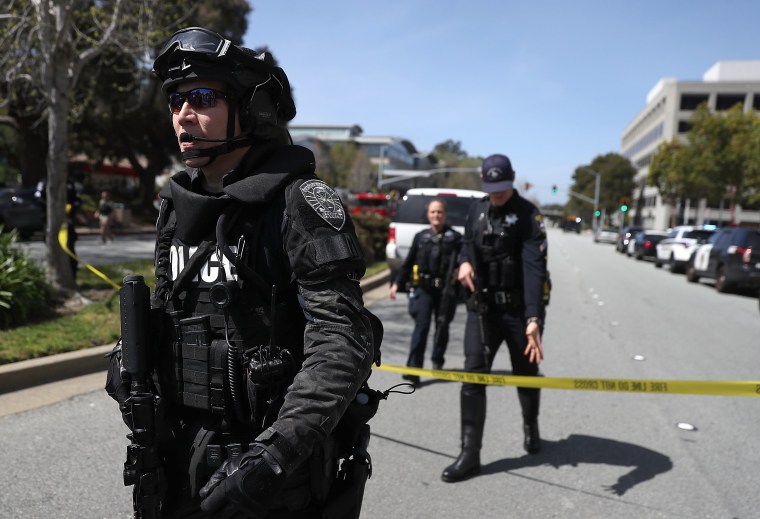American mass shootings tend to follow a grim pattern: A man opens fire on a school or workplace, claiming lives and sowing chaos.
But the shooting at YouTube headquarters in California on Tuesday afternoon appeared different in at least one respect: The suspected shooter was a woman. She opened fire on an outdoor dining area at lunchtime.
Law enforcement sources initially said the incident appeared connected to a domestic dispute, but San Bruno police said Tuesday night that "at this time there is no evidence that the shooter knew the victims of this shooting or that individuals were specifically targeted." However, the investigation into the motive was ongoing.
The suspected shooter, identified by police as Nasim Aghdam, 39, died of a gunshot wound police believe was self-inflicted.
It's uncommon for a mass shooter to be female: There were only three cases in the past three decades, according to a database compiled by Mother Jones. And research conducted by the New York Police Department found that only eight of 230 "active shooter" cases in the United States from 1966 to 2012 involved female attackers.
And in the broader category of mass killings — including other methods of execution, such as arson — only 6 percent of perpetrators are women, according to a database compiled by USA Today.
"It's definitely very rare to see a female shooter," said Sherry Hamby, research professor of psychology at the University of the South in Sewanee, Tennessee. "The more extreme the violence, the more likely the perpetrator is to be male."
Hamby said research has pointed to a variety of reasons men are more likely to be violent, including a sense of entitlement. When women are violent, there tends to be a connection to a domestic dispute, Hamby said.
Mother Jones used a strict set of criteria for their mass shooting database. They looked at incidents in which at least four people, not including the shooter, were killed, and that took place in a public place (not a private residence), usually in a single location.
Out of 73 incidents that met that criteria, just three public mass shootings since 1982 — including the San Bernardino attack in 2015 — involved a female killer.
As of Tuesday afternoon, authorities have not confirmed any deaths in the YouTube shooting other than Aghdam, so she would not meet the Mother Jones database's criteria for a mass shooter.
Here's a few notable examples of previous female mass shooters:
San Bernardino shooting
Tashfeen Malik, 27, and her husband, Syed Rizwan Farook, 28, unleashed a hail of bullets on a conference room at the Inland Regional Center, a state-run facility for people with development disabilities, on Dec. 2, 2015, killing 14 people. The pair were slain about four hours later in a shootout with police.
Alturas tribal shooting
Cherie Lash Rhoades, 44, former chairwoman of the Cedarville Rancheria tribe, opened fire at the Cedarville Rancheria Tribal Office and Community Center in Alturas, California on Feb. 20, 2014. Among those killed were her brother, her niece, and her nephew. When she ran out of ammunition, she grabbed a butcher knife and stabbed another person. All told, she killed four people and wounded two.
The Goleta postal shooting
Jennifer San Marco, 44, a former postal worker, fatally shot a former neighbor in Goleta, California, then drove to the mail processing plant where she used to work on Jan. 30, 2006. She opened fire inside, killing six employees before killing herself. The U.S. Postal Service said that San Marco worked for the Postal Service for six years, but was given early retirement in June 2003 because of psychological problems.

